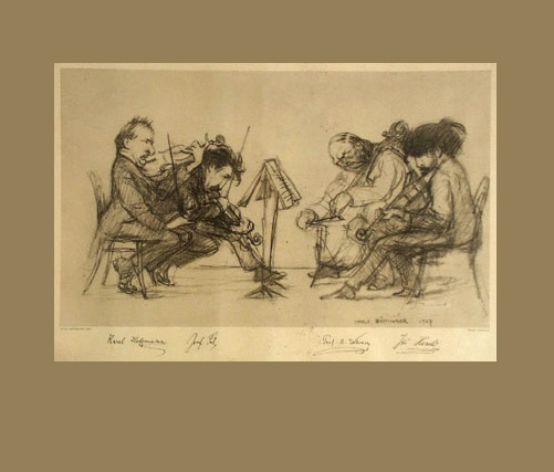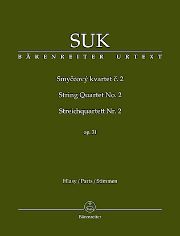Milestone in the history of the quartet
In his second string quartet op. 31, Josef Suk shows himself to be a bold innovator who succeeds in creating a grandiose work that is still far too little known.

In the early days of chamber music, it was widespread practice that the authors of the works were also their first performers. As there was a lack of material, they "produced" for their own use. This close link between creator and work was maintained in individual cases until the 20th century, but then became rare. Almost all pioneering composers came from the piano. The exceptions are Arnold Schönberg (who tried out his first D major quartet himself on the cello) and Josef Suk, Dvořák's son-in-law. The Bohemian String Quartet, which he co-founded on second violin, enjoyed a legendary career. One contemporary witness raved about the "unheard-of intensity, freshness and technical perfection". Listening to the recording of Dvořák's Opus 96 performed by this quartet available on YouTube, it is not easy to understand these attributes. In this recording from 1928, however, the ensemble had already celebrated 37 years of existence, the fiery young musicians had become old gentlemen, but you can still hear a highly authentic art of interpretation.
As a student, Suk made several attempts to write for quartet before publishing his first string quartet as opus 11 in 1896. While this was still based on the great models of the Czech tradition, the second quartet op. 31 from 1911 marks a significant contribution to modernism, the importance and quality of which is still widely underestimated today. The work, which lasts just under half an hour - all parts are to be played together - defies a quick reception due to the abundance of motivic variants, the jagged complexity of the movements with their countless references and cross-references. Still tonally structured, but making full use of harmonic boundaries, the musical statement is difficult to comprehend as a continuum at first hearing. Nevertheless, the high emotionality of the work with its grandiose texture for string quartet is impressive. The quiet moments of the Molto adagio, which is flanked by a cheeky scherzo, are deeply moving and evoke the great power of the Czech chorale.
The quartet is an eminent challenge for any quartet, similar to Alban Berg's Opus 3, which was written at the same time. It remains to be seen whether the more eye-friendly new edition by Bärenreiter is really a gain over the old Simrock edition available to date. But if it raises awareness of the work and promotes its performance in the concert hall, the commitment to this milestone in string quartet history will have been worthwhile.
Josef Suk, String Quartet No. 2 op. 31, Urtext edited by Zdenek Nouza; set of parts, BA 9536, 29.50; study score, TP 536, € 23.50; Bärenreiter, Prague 2015









